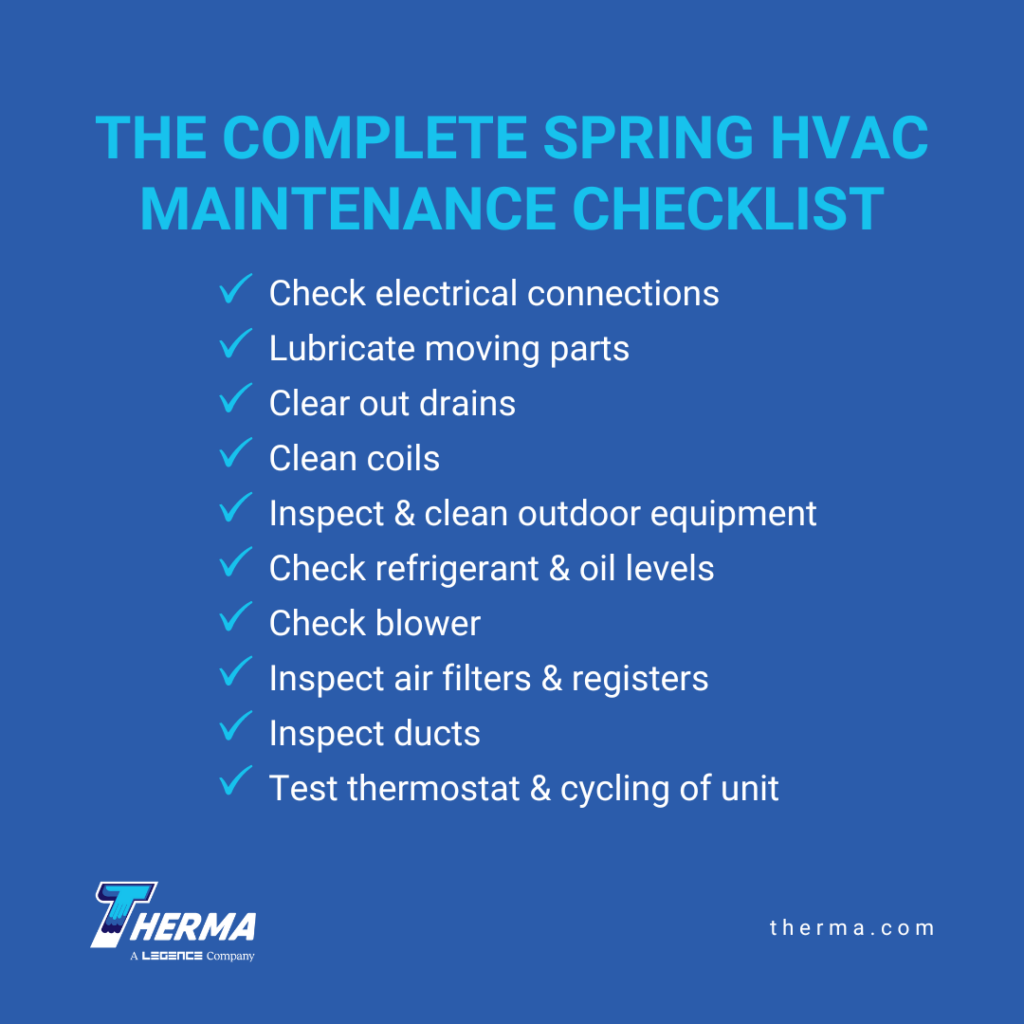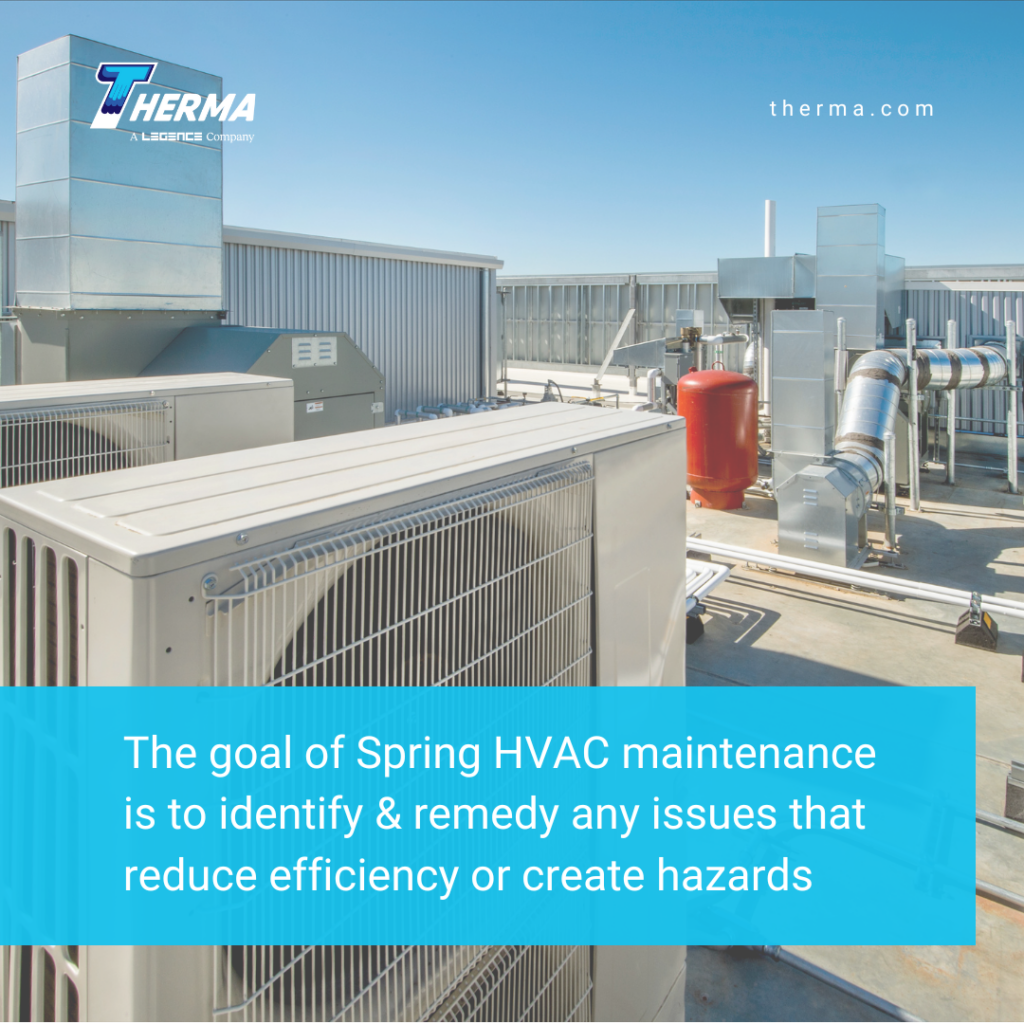By Patti Dees
HVAC Spring maintenance prepares the system for changing season demands. The shift from heating to cooling draws on equipment that may have been dormant for months. Potential trouble can be avoided by inspecting and cleaning HVAC equipment before you need it.
How does the season change affect HVAC needs?
Spring and summer bring a different set of challenges for HVAC systems. Increased humidity and higher temperatures create a greater demand for air conditioning and a greater demand for electricity. Outdoor units are exposed to dust, grime, pollen, debris, and sometimes grass and vine encroachment.
The goal of Spring HVAC maintenance is to identify and remedy any issues that reduce efficiency or create hazards. Early identification of needed repairs sets the system up for better performance and safeguards the property from potential damage. Cleaning improves efficiency and indoor air quality (IAQ), benefitting occupants and facility managers.
The Spring HVAC Maintenance Checklist
While some maintenance tasks may be specific to certain types of HVAC system designs or special equipment, there are common tasks that can improve efficiency and IAQ for all systems.
Check electrical connections
Loose connections place a strain on components and create fire hazards. Electrical systems should be inspected and tested to ensure the supplied voltage and current are correct.
Lubricate moving parts
Friction increases the energy needed to move parts. This increases both electricity use and wears on the equipment.
Clear out drains
HVAC systems help control humidity levels indoors, keeping areas more comfortable and reducing the chances for mold growth. Clogged drains lead to higher humidity levels, and in some cases, water or mold damage.
Clean coils
HVAC coils provide the surface area for heat transfer. Dirty coils work harder and have a shorter lifespan. The grime leads to increases in energy use and frequency of repair or replacement.
Inspect and clean outdoor equipment
Outdoor equipment is exposed to the elements and environmental circumstances that can impact how well the system works. Fine debris such as dirt or grass clippings can adhere to fins and reduce heat transfer efficiency. However, large debris, including vegetation growing too close to the unit, can block airflow around the fins or even damage them.
Check refrigerant and oil levels
Refrigerant is what allows the system to move heat and should be kept at optimal levels. Equipment should be inspected for leaks, which must be repaired before more refrigerant can be charged to the system. Some refrigerants require certification to work with.
Additionally, if equipment uses an oil reservoir for continuous lubrication or heat transfer, it should also be inspected for leaks and topped off.
Check blower
HVAC requires air circulation for temperature regulation, humidity control, and IAQ. The blower circulates the conditioned air and provides ventilation. Spring maintenance should include inspection for damage and adjustments to belt tension.
Inspect air filters and registers
Filters, and to some degree, return registers to remove dust, microbes, pet hair, etc. They improve IAQ by controlling odors, allergens, and pathogens. In addition to blocking particulate matter that could create health hazards or reduce efficiency, they also help maintain optimal system pressure.
Registers should not be blocked and no more than 20% of vents should be closed off at a time. Closing off more registers can create pressure issues, reducing the system’s ability to function properly.
Filters should be cleaned or changed according to the manufacturer’s recommendations or a prescribed maintenance plan. Registers should be cleaned as needed.
Inspect ducts
Air conditioning costs money so it is important that the cool air is finding its way to the appropriate spaces. Damaged ductwork, gaps in insulation, and accumulated debris waste money and strain equipment as the system struggles to meet cooling demands.
Test thermostat and cycling of unit
Thermostats communicate with the system to trigger the cooling cycle based on a set temperature. A test run or two verifies that the thermostat is connecting with the system and that the unit cycles smoothly.
Some of the more common tasks to prepare for warmer weather can be done by anyone. However, for tasks such as checking electrical connections or working with refrigerants, professionals may be required. The HVAC team at Therma can help with maintenance to keep your system running at its best. Contact us today to learn more.
Patti draws on her background as a chemical engineer to share information with readers on technology, manufacturing, and construction.
Sources
Energy Star – Maintenance Checklist | ENERGY STAR
UF IFAS Extension Blog – Closing Your Seasonal Home1
Energy.gov – Maintaining Your Air Conditioner | Department of Energy
HVAC.com – Summer HVAC Maintenance Tips and Tune-Ups









